Install An RV Solar Power System And Camp Off The Grid
My RV solar power system has been an investment in freedom that feels so good! To begin with, solar power has given this RV Vagabond
more camping options and less dependence on electricity and gasoline.
How nice is it to stay put for a while in a beautiful spot and not have to worry about recharging your batteries or buying gas to run your generator? Now you can minimize camping costs, eliminate disturbing noise and smelly fumes and, best of all, maximize your freedom.
Want to stay in a National Forest camping area for a week, no problem . . . or a casino parking lot, or a friend's driveway, or Walmarts across the country for a beeline destination drive. No problem!
Before I bought my RV solar power panel system, I had to either run my generator for several hours a day to charge my deep cycle flooded cell type batteries or travel often to recharge them and, even then, they would, often, not be fully charged. This is costly in gasoline and battery life, not to mention stress and freedom.
Deciding to Add Solar Power to My RV
Before you start listening to all the campfire chatter about RV solar power, solar panels, the different types of controllers and batteries, a word to the wise, DON'T. People are good-hearted and want to help, but in most cases they are not experts and tend to recommend the components of the solar power system they put in place. Things change, improve. You are likely to open yourself up to confusion and delay.
There is very good literature available of a generic type to describe solar power components and help you make decisions based on your needs and budget. I obtained a basic education reading a very thorough catalog from CEA Solar, LLC and from the website of the company I went with for my system, Starlight Solar, in Yuma, AZ.
I did get a couple of recommendations for Starlight's RV Solar Power Systems before I visited them. One from a satisfied customer with a Class B, like mine, who has a 3 year old system in place and another from an accomplished do-it-your-selfer with a bus.
Do your due diligence. RV Solar power systems are not cheap and a good installation is critical!
But I gotta say one thing . . . don't get caught up in the paralysis of analysis. You can make a list of all the things that need power and determine amp hours but you will forget things or buy new things that will not have been accounted for, guaranteed. I loved what my solar power system installer said to me that rang so true. . .
You Can Never Have Enough Power
With that in mind, I bought the most
efficient 95-Watt solar panels available and put as many as I could
on top of my motorhome, three in total, leaving room for an omnidirectional
TV antenna in front. Putting them up over the air conditioner and Fantastic Fan was accomplished by putting the solar panels on a raised frame. Piece of cake!
I chose a Maximum Power Point Tracking, or MPPT, controller, more advanced technology that results in 15-30% more power output for faster battery charging. The MPPT combines with the Pulsating Width Modulation (PWT is a basic model) controller's ability to optimize charging and converts nearly all of the solar power to battery charge current, according to the catalog and website info. Get the biggest bang for your buck, folks.
Next came the battery. Since my flooded cell types were dying, I went with an 8D deep-cycle 12 volt AGM (Absorbent Glass Mat) battery. It's fully sealed, maintenance free and selecting one large unit, only $45 more than 2 batteries and 110 lbs. lighter, gave me more efficient use of my storage space as well as the power to match the rest of my system.
|
The final major component of my RV solar power system was the
inverter. I had one, but it was not a pure sine wave unit. If I
wanted to protect my laptop and other valuable electronics I needed
this. A 1500-Watt model would take care of my needs and even run my
hair dryer. The remote control panels for it and the controller were mounted conveniently on a shirt cabinet wall over one of the bunkbeds. Access is perfect! |
Good To Go . . . Anywhere
All that to say, I can sit in the desert, explore a canyon, hang out in a National Forest for days on end, and only have to go get water and dump once a week or maybe even 10 days. And believe me, even in the desert, that is a piece of cake compared to keeping the fridge running, staying connected electronically for work, commerce, safety, entertainment, friendship and having hot water for hygiene.
And when I stealth camp or camp close to others, I can still have my coffee in the wee hours of the morning and no one is the wiser or disturbed.
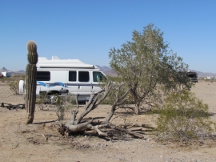
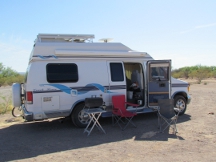
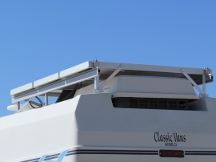
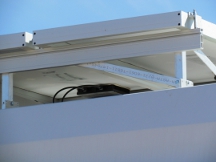
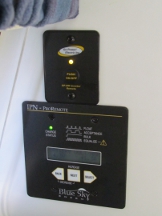






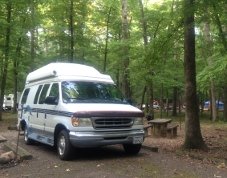

New! Comments
Have your say about what you just read! Leave me a comment in the box below.